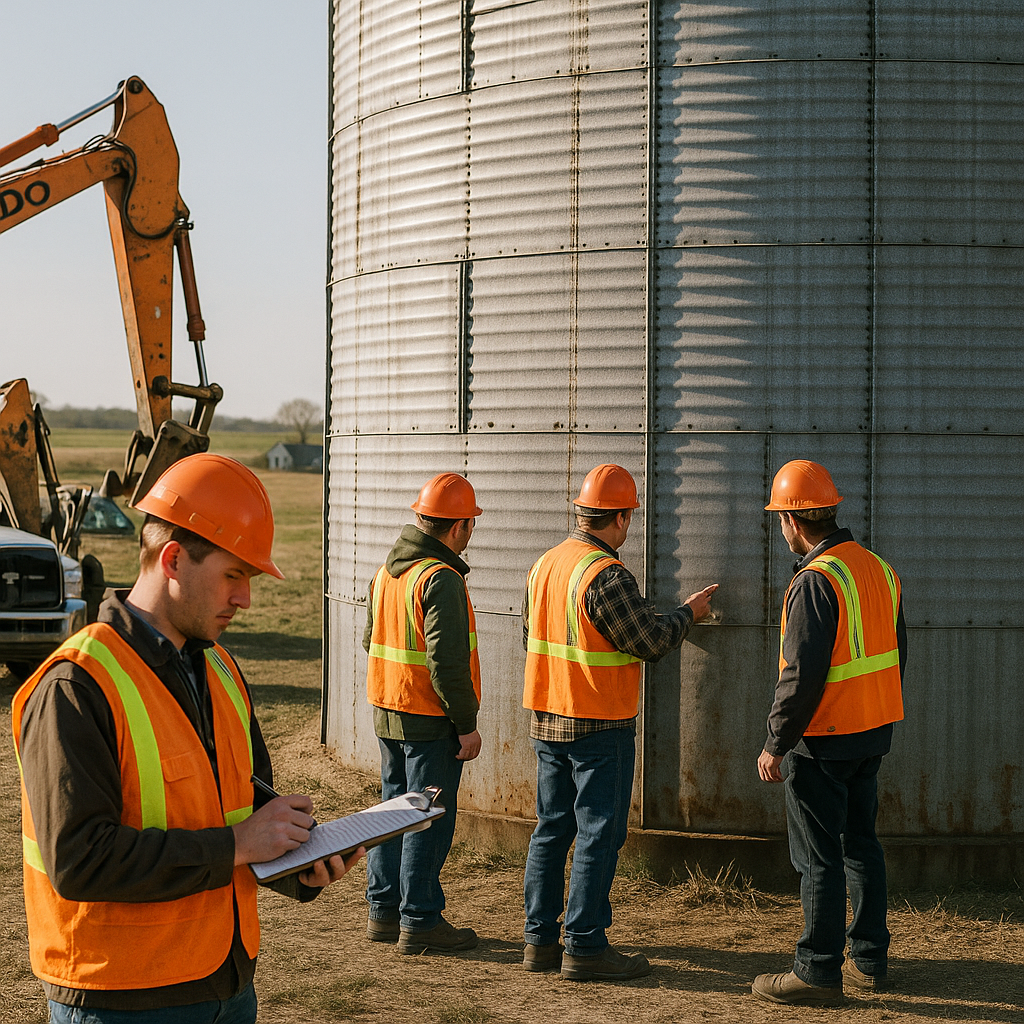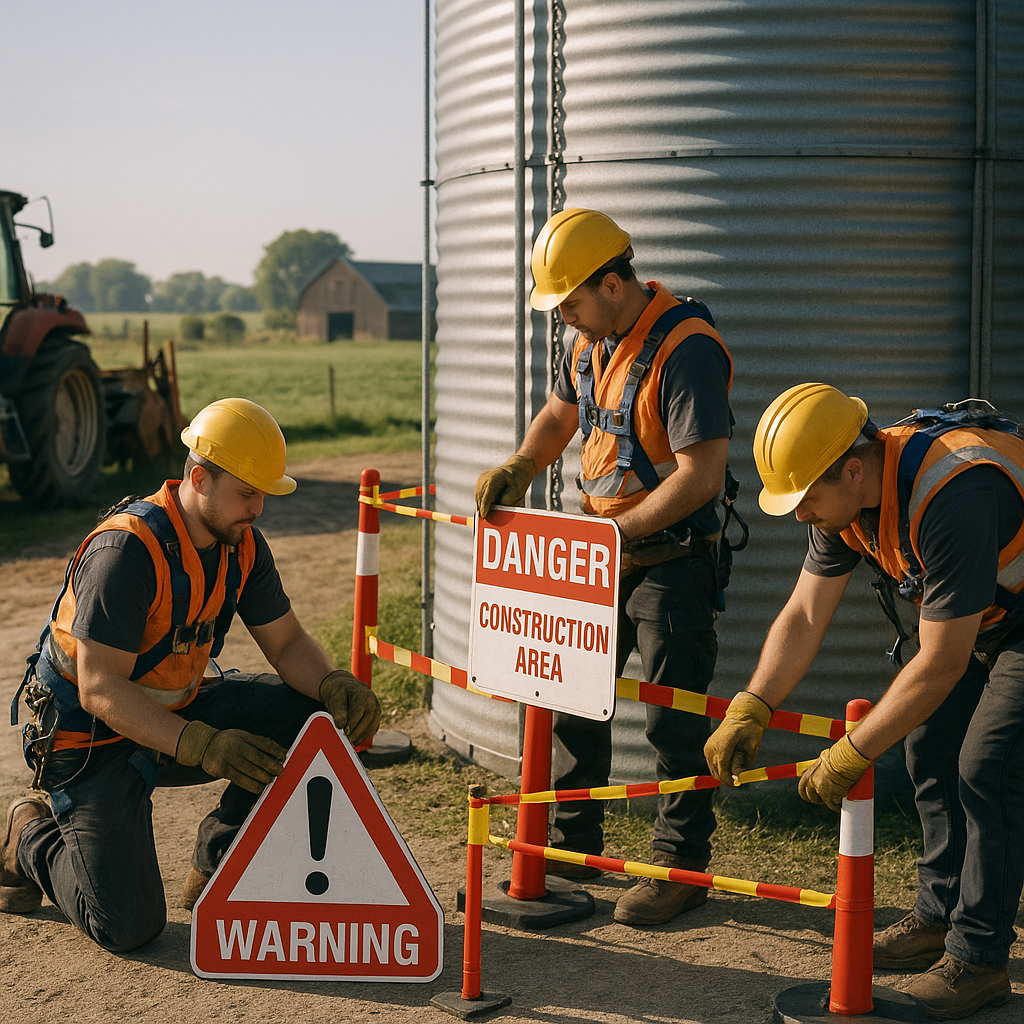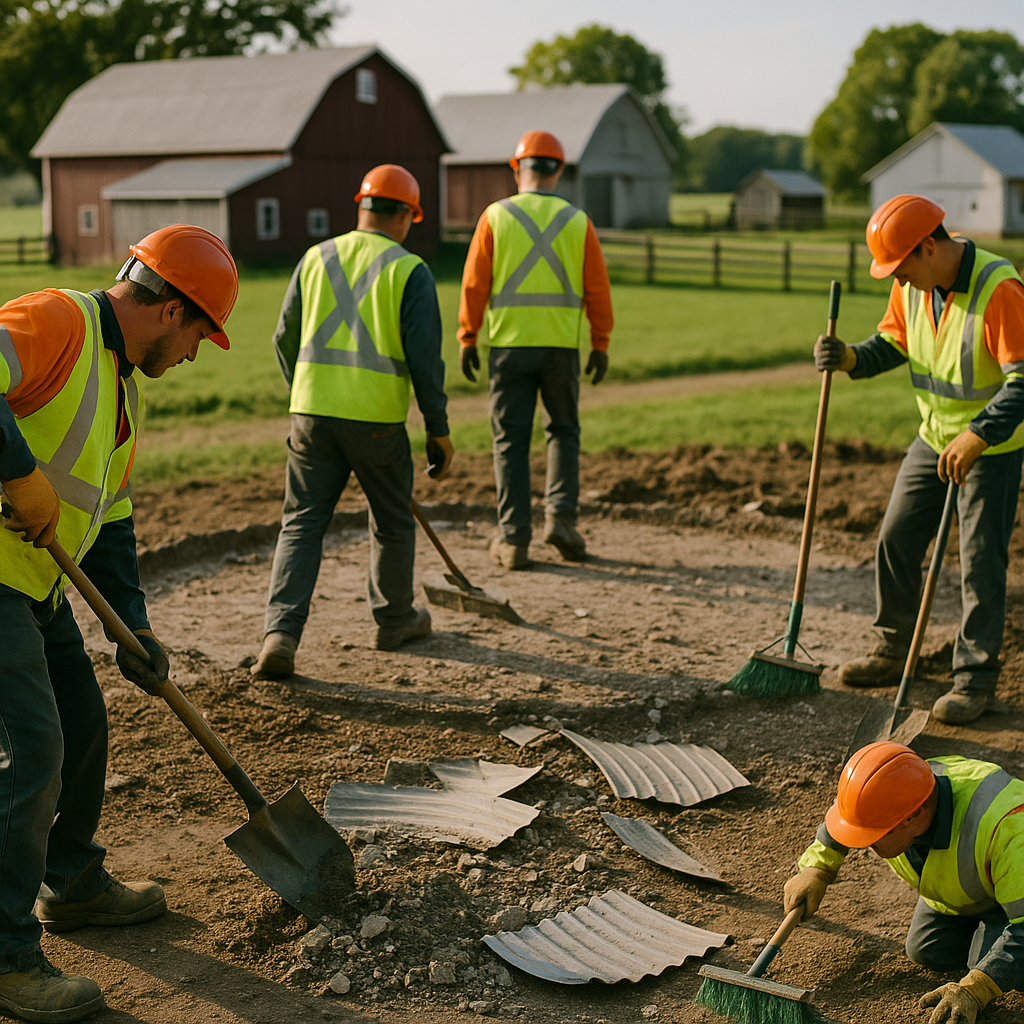5901 Botham Jean Blvd, Dallas, TX 75215
Discover the Options for Disposing of Metal Grain Silos and Bins?
August 9, 2025When metal grain silos and bins reach the end of their useful life, farmers and property owners face important decisions about disposal. These large steel structures, once vital for agricultural operations, require careful consideration for removal. Dismantling and disposing of grain storage facilities is not just about clearing space—it is also an opportunity to recover valuable resources and potentially create new value.
There are three primary options for handling outdated grain storage structures. Recycling allows the metal components to be processed and reused in manufacturing new products. Repurposing offers creative alternatives where the structures find new life as buildings, storage containers, or unique architectural features. For structures beyond repair, proper demolition and disposal ensure materials are handled according to environmental regulations and safety standards. The best disposal choice typically depends on several factors.
The structural condition of the silo or bin plays a major role, as does the local availability of recycling facilities. Market demand for scrap metal can influence the economic benefits of recycling versus other disposal methods. Additionally, local regulations may determine which options are permitted in your area.
Cost Factors in Metal Grain Silo and Bin Disposal

Budgeting for the removal and disposal of a metal grain silo or bin involves more than just a simple phone quote. Costs are influenced by numerous variables—some predictable, others unique to each project. Understanding these factors can help property owners plan effectively and avoid unexpected expenses.
Size, Material, and Weight
The physical characteristics of the silo or bin often drive costs significantly. Tall, wide silos made of thick-gauge galvanized steel require more manpower, specialized tools, and heavy lifting equipment. Aluminum bins, while lighter, may still need careful dismantling due to structural complexity.
Site Accessibility and Location
Transporting dismantled metal to a recycling facility is a major component of disposal cost. If the silo is located in a remote rural area or on land with difficult terrain, additional trucking or equipment may be required. Limited access roads or overhead obstructions can also increase setup time and cost.
Environmental and Safety Compliance
Disposal that involves environmental testing, soil remediation, or hazardous material handling—such as removing lead-based paint or chemical residues—will add to the budget. Compliance with environmental regulations is non-negotiable, but it does come with professional service fees.
Scrap Metal Market Value
Market demand for scrap metal can work in your favor. During times of high demand, recycling companies may offer higher buy-back rates for your recovered steel or aluminum, offsetting part of your disposal cost.
Safety Protocols for Silo and Bin Removal

Removing a metal grain bin involves more than simple demolition—it’s a precise task requiring strict adherence to safety standards. Without proper planning and protective measures, workers face risks like falls and respiratory hazards.
Fall Protection and Structural Stability
Grain bins can exceed 40 feet in height, so OSHA-compliant fall protection is crucial. Harnesses, lifelines, and guardrails help mitigate risks. Before dismantling, conduct a structural assessment to identify weak points and prevent unexpected collapses.
Dust, Mold, and Airborne Hazards
Old grain bins often contain residual grain dust, mold spores, or rodent droppings, which can become airborne during cutting or dismantling. Dust suppression methods, such as misting systems, should be employed, and workers should wear N95 or P100 respirators.
Confined Space Entry
If dismantling from the inside, workers may need to enter tight spaces, so confined space safety training, continuous air monitoring, and emergency retrieval systems are vital for preventing accidents.
Heavy Equipment Safety
Cranes, lifts, and cutting torches are commonly used in bin removal. Operators should be certified, and all equipment must be inspected before use. A clear communication system, often via radios or hand signals, helps coordinate movements and prevent accidents.
Repurposing Grain Silos for Alternative Uses

For those seeking sustainable and creative solutions, repurposing a metal grain silo can be a viable alternative to demolition. The durability of galvanized steel lends these structures to various new applications, spanning functional storage to impressive architectural endeavors.
Residential and Commercial Conversions
Some property owners have transformed silos into unique homes, cabins, or Airbnb rentals. The cylindrical design offers an unconventional aesthetic, while interior modifications introduce modern amenities. Businesses have also repurposed these spaces into breweries, coffee shops, and event venues.
Agricultural and Storage Uses
Even if no longer suitable for grain storage, bins can house feed, fertilizer, or equipment. Smaller structures may serve as shelters for livestock, hay storage, or even as greenhouse frameworks.
Artistic and Community Projects
In some rural towns, old silos have been repurposed as public art installations or community gathering spaces. Adding murals or observation decks can transform an aging structure into a local landmark.
Structural Considerations Before Repurposing
Before repurposing, a structural engineer should evaluate the integrity, corrosion levels, and load-bearing capabilities of the silo. Necessary reinforcements, ventilation upgrades, and insulation can make the converted space safe and comfortable.
What are the Environmental Considerations for Grain Bin Disposal?

Managing contamination is a significant challenge in grain bin disposal. Years of agricultural chemical use may have left residues of pesticides, fumigants, or preservatives that require special handling, as these substances pose risks to groundwater and surrounding ecosystems if not properly managed. Soil testing around older grain bin foundations can identify potential contamination issues before removal starts.
Dust control is another crucial environmental consideration during grain bin demolition. The process can release particulate matter containing grain dust, mold spores, and other potential respiratory irritants. OSHA regulations require the use of dust suppression methods, such as water spraying, to minimize airborne emissions, thus protecting workers and neighboring properties from harmful exposure.
Metal recycling provides a sustainable solution for grain bin disposal, offering both environmental and economic benefits. Most grain bins contain significant amounts of galvanized steel or aluminum that can be recovered and reused. The recycling process reduces the need for virgin metal production, conserving energy and minimizing mining impacts. According to industry practices, nearly 95% of a standard grain bin’s metal components can be recycled.
The concrete foundations of grain bins pose disposal challenges but also offer opportunities for environmental conservation. Instead of sending concrete to landfills, it can be crushed and repurposed as aggregate for new construction projects or as road base material, reducing landfill burdens while providing valuable construction materials.
Working with experienced disposal companies specializing in agricultural structures is crucial for ensuring environmental compliance. These specialists understand the unique challenges of grain bin removal, including the safe handling of hazardous materials. They can implement proper containment measures for potentially contaminated materials and ensure all waste is directed to appropriate disposal or recycling facilities.
The environmental benefits of proper grain bin disposal go beyond regulatory compliance. Removing abandoned or deteriorating structures eliminates potential habitat for pests and reduces the risk of collapse, which could harm wildlife or contaminate soil. Professional disposal also ensures thorough site remediation, allowing land to be safely repurposed for new agricultural or other uses.
When choosing a disposal company, seek contractors with specific experience in agricultural structure removal and a proven track record of environmental compliance. Request information about their waste management procedures, including handling hazardous materials and recycling practices. Reputable companies will provide clear documentation of proper disposal methods and any required environmental permits.
For larger grain bin disposal projects, environmental impact assessments may be required to identify potential risks and mitigation strategies. These assessments evaluate factors like proximity to water sources, the presence of protected species, and potential for dust or noise pollution during removal. They help ensure the disposal project proceeds with minimal environmental disruption.
Conclusion: Best Practices for Safe and Responsible Silo Disposal

Disposing of metal grain silos and bins requires careful planning and methodical execution. With the correct approach, silo disposal can be conducted safely while minimizing environmental impact. Adhering to safety protocols during dismantling is crucial to protect workers from hazards such as falls, structural collapses, and confined space dangers inherent in these large agricultural structures.
Environmental responsibility is equally important in silo disposal. By following local regulations for metal waste management, separating recyclable materials, and properly handling any hazardous components, farm owners can ensure compliance with environmental standards. Recycling offers specific benefits: metal components can be recovered and reprocessed, reducing the need for new raw materials and lessening the overall environmental footprint.
For your silo disposal needs, contact Okon Recycling at 214-717-4083. Our team specializes in responsible metal recycling solutions that prioritize both safety and environmental compliance, helping you navigate the disposal process with confidence.
